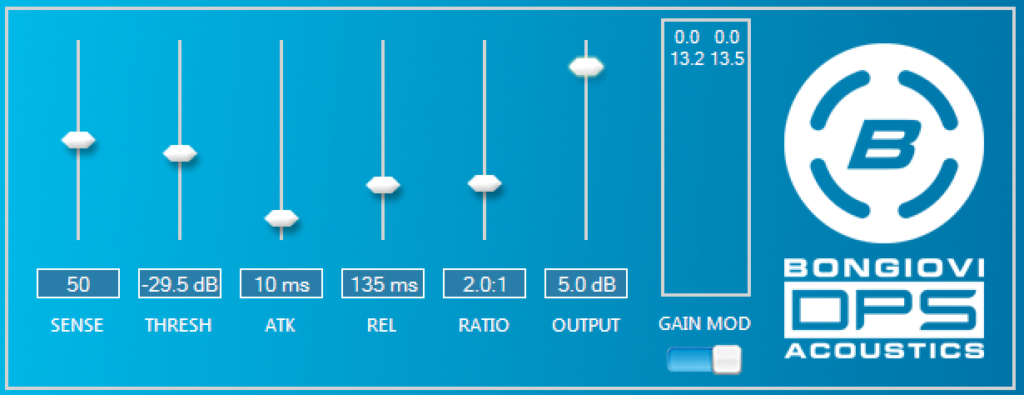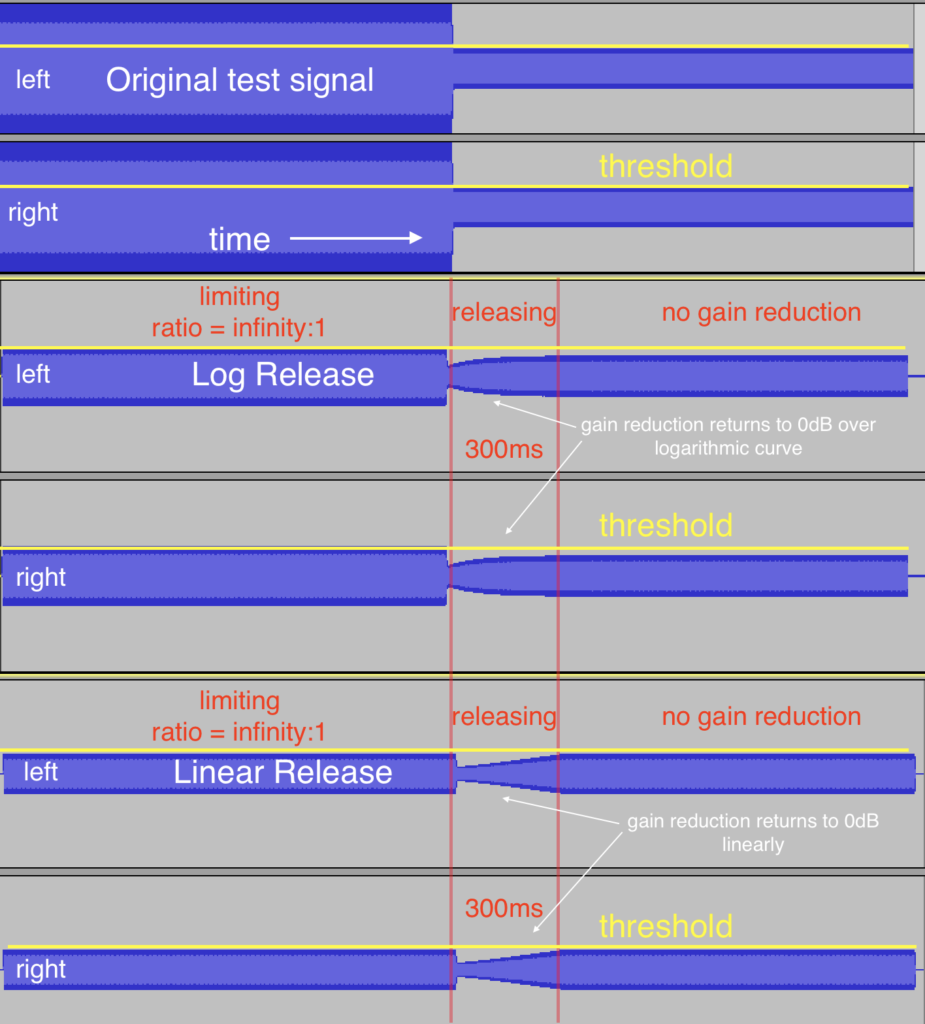The main focus of the DPS patents is the implementation of powerful, effective, high-quality dynamic range control. Therefore, understanding the core principles of DPS requires a full grasp of the fundamentals of audio compression/limiting and the parameters that contribute to a subjectively good result. This manual assumes the reader already understands the general concepts of audio dynamic range control. If a basic overview is desired, visit this external article.
Common Names
There are several names used for dynamic range control algorithms. At a basic level, these names all refer to the same general algorithm. The differences relate to usage and parameters:
- Automatic Gain Control (AGC)
- A broad term referring to almost any application.
- Bongiovi uses this term to refer to all dynamic components.
- Dynamic Range Control (DRC)
- Occasionally used in reference to speaker protection.
- Compressor
- Commonly used in the recording studio with regards to ratios >1:1 to <=4:1.
- Limiter
- Almost exclusively refers to ratios >10:1 to infinity:1.
- Commonly accompanied by <=0ms attack time to prevent any sound from exceeding the threshold.
Bongiovi AGC Controls
SENSE
This Sensitivity control is the unique part of the Bongiovi AGC. This feature allows the AGC to respond to perceived loudness instead of only the amplitude of the signal. This graph displays the subjective perception of loudness:
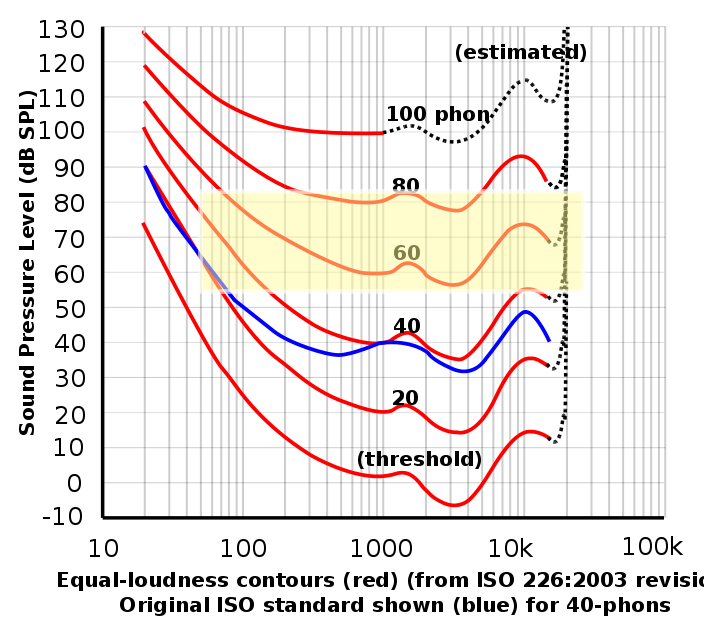
Humans are significantly more sensitive to high-midrange frequencies (~3kHz) than to low frequencies (<200Hz) or very high frequencies (>8kHz). At the bottom part of the graph (quietest SPL levels), there is >30dB difference in sensitivity to high-mid frequencies than low frequencies. At moderately loud listening levels (60 to 80dBSPL) the difference is less at ~20dB.
The SENSE control may be adjusted according to this perceived loudness graph. A SENSE value of 100 roughly equals a 24dB sensitivity differential to high vs low frequencies according to the acoustic model. A SENSE value of 0 roughly equals a 12dB differential. This range is correlated to the yellow highlighted area on the perceived loudness graph.
If the intended normal listening SPL of the final product is quiet (50 to 70dB SPL) the SENSE may be adjusted to between 70 and 100. Moderate listening levels (headphones and loud portable speakers) benefit from SENSE of 50 to 70. Very loud listening (large speakers and HiFi systems) may benefit from SENSE of 30 to 50.
NOTE: Aside from the Dynamic Stereo Enhancement algorithm, the other AGCs in the DPS signal path do not include the Sensitivity feature. They operate as standard compressor/limiters using the controls listed below.
THRESH
The threshold is the level at which the ratio will be applied to the signal for gain reduction. This threshold has a relationship with the SENSE value; when SENSE = 100, the threshold will cause detection 12dB lower than SENSE = 0.
RATIO
All AGCs in the DPS signal path may be used for compression or limiting by choosing the desired ratio:
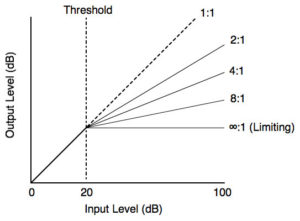
When an AGC is set to 1:1 (nothing to do), only OUTPUT gain is applied to the signal. All other parts of the AGC function are bypassed for CPU efficiency.
ATK and REL
Attack and Release controls adjust the timing response of the AGC:
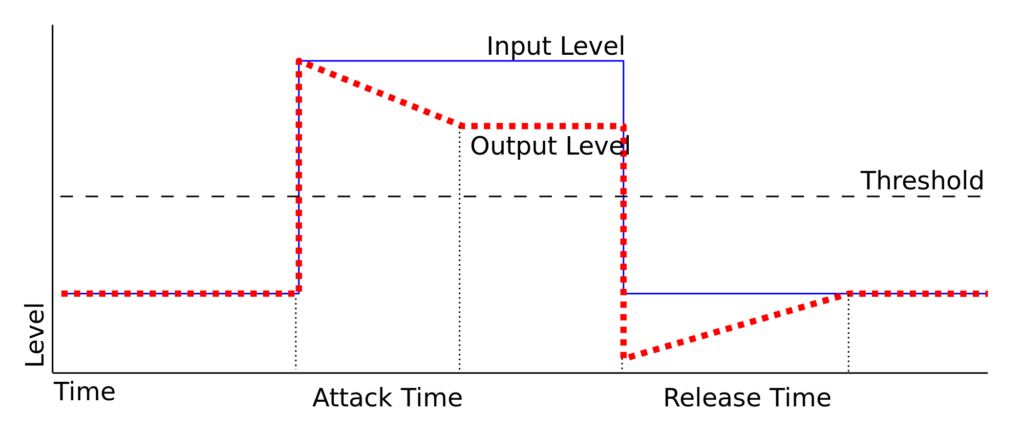
ADV options
Logarithmic or Linear Release
Some DPS platforms offer logarithmic release selection (currently accessed by clicking ADV next to the desired AGC). This changes the shape of the release envelope:
A logarithmic release is useful when limiting (infinity:1 ratio) to provide a louder overall signal with less pumping artifacts.
Look-Ahead
For those platforms that support ADV options, Look-Ahead mode may be selected for each AGC. This adds a 64 sample delay to the signal while the level sensing algorithm receives the non-delayed signal. This option should be used with attack times from 0ms to 3ms. The effect is to reduce transients induced at the onset of gain reduction for loud signals.
NOTE: Because a delay is introduced into the signal, all AGCs within the 2 or 3 band crossover must have the same look-ahead setting! If they do not, phase issues will be heard due to interactions between delayed and non-delayed crossover bands.
GAIN MOD
The Gain Modulation meter displays the current gain reduction being applied to the signal. The moving meter bar gives an intuitive sense of the gain changes while the values inside the meter display the exact value in decibels:
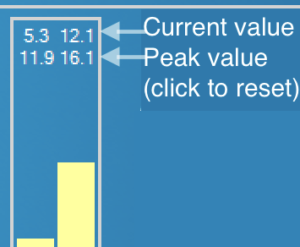
The momentary current value is updated every ~50ms. The peak value holds the last largest value until it is clicked for reset.
